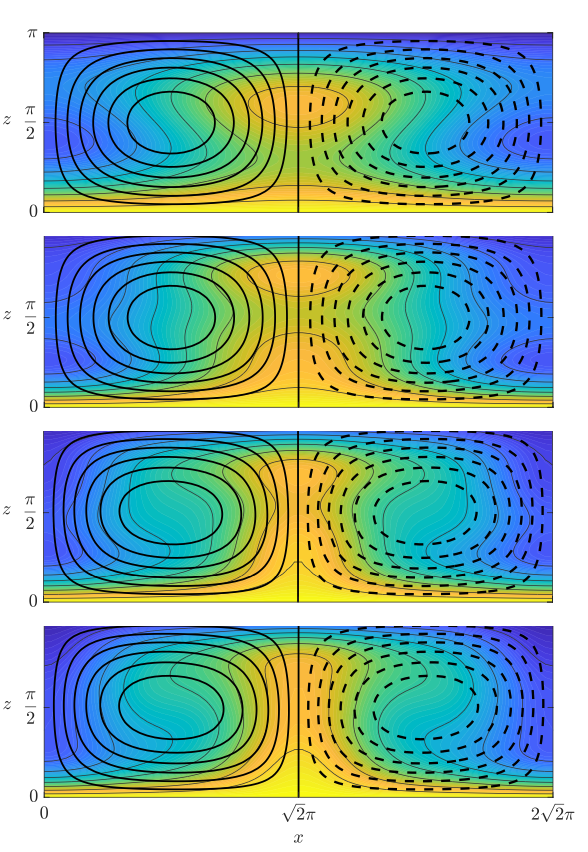Description

The governing equations of many fluid dynamical systems (e.g., the Navier Stokes equations) are complex and solving them is challenging. Rather than using computationally demanding numerical methods to solve the full system, one approach is to instead derive and solve a "reduced model". Such a model retains key features of the full system but is much less demanding to solve and can provide key physical insight.
There are different approaches to obtaining a reduced model. One common technique expands variables in terms of an orthogonal set of basis functions (e.g., Fourier modes) and then heavily truncates the sum to leave only a few modes. A famous result of this approach is the Lorenz system which was derived as a reduced model of atmospheric convection and contains just three simple ODEs.
More formally, so-called model order reduction techniques can be used to reduce the computational complexity of fluid dynamical systems. In recent years, these ideas have been combined with data-driven methods to identify reduced equations from complex time series.
Other approaches to forming reduced models involve making asymptotic expansions which do not necessarily lead to a reduction in the order of the problem (for example a 3D partial differential equation may remain a 3D partial differential equation) but they can lead to models where analytic progress is possible.
There are many different directions this project could take depending on personal preferences. Possible paths include (but are not limited to):
- deriving and examining reduced models of specific fluid systems.
- investigating different mathematical techniques used to derive reduced-order models (e.g., Dynamic Mode Decomposition or Principal Orthogonal Decomposition).
- exploring methods used to discover underlying (reduced) governing equations from data (see e.g., SINDy).
Prerequisites
Fluid Mechanics III is required. Dynamical Systems III may be useful but is not essential. It is expected that most projects in this area will require some numerical computation in Python (or similar) but only basic knowledge of programming is required. An eagerness to learn and try things out is more important!
Resources
- Textbook by Hilborn (see Appendix C for a derivation of Lorenz system).
- Research article by Buckley and Bushby (2013) (example of using a reduced model to study a particular fluids problem).
- Paper by Brunton et al. (2016) (provides some nice examples of a method to recover governing equations from data).
- Excellent series of videos by Brunton (covering Dynamic Mode Decomponsition, Sparse identification of nonlinear dynamics and much more).
For more information email: Laura Currie